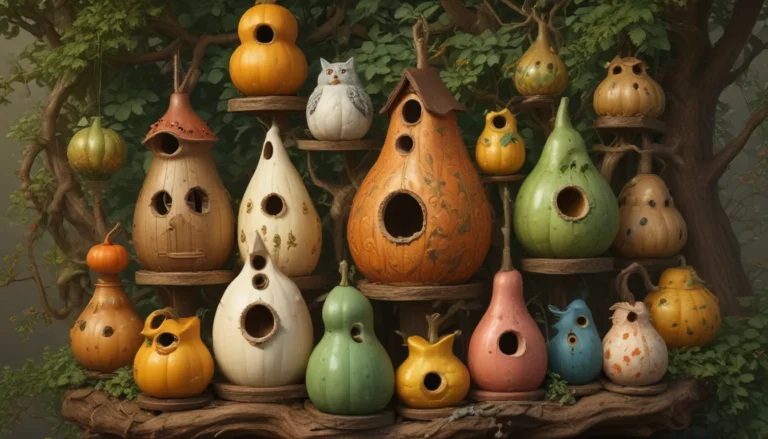A Complete Guide on Growing Cantaloupe in Containers

If you have limited space for gardening, or if you live in a region with extreme weather conditions, growing cantaloupe in containers could be the perfect solution for you. Not only can you enjoy the sweet, delicious taste of home-grown melons, but you can also have the flexibility to move your plants indoors or outdoors as needed.
In this comprehensive guide, I’ll walk you through the entire process of growing cantaloupe in containers. From selecting the right cultivars to managing pests and diseases, you’ll find all the information you need to successfully grow your own melons at home. So let’s dive in!
What You’ll Learn
- Getting Started
- Why Grow in a Container?
- Choosing the Right Container
- Preparing Your Container
- How to Grow
- Container Care
- Growing Tips
- Cultivars to Select
- Managing Pests and Disease
- Harvest Time
Getting Started
Cantaloupe, a member of the Cucurbitaceae family, is a popular melon variety enjoyed for its sweet flavor. There are two major varieties of cantaloupe, the North American Cucumis melo var. reticulatus, and the European C. melo var. cantalupensis. In this guide, we will focus on growing container-grown cantaloupe plants.
Cantaloupe plants are vining plants with a sprawling growth habit. To successfully grow them in containers, you’ll need to select a dwarf variety and train them to grow vertically using a trellis or tomato cage. The following sections will walk you through each step of the growing process.
Why Grow in a Container?
Growing cantaloupe in containers offers several advantages, especially if you live in a region with extreme weather conditions. Containers allow you to control the growing environment more effectively, ensuring that your plants receive the right amount of sunlight, water, and nutrients.
Containers also provide flexibility, allowing you to move your plants indoors or outdoors as needed. Whether you’re dealing with cold temperatures or scorching heat, containers offer a way to protect your plants and extend the growing season.
Choosing the Right Container
When selecting a container for your cantaloupe plants, choose one that is at least 16 inches deep and 14 inches wide. This will provide enough space for the roots to grow and ensure that your plants thrive.
If you have limited space, consider using smaller containers that are easier to move around. Plastic, terra cotta, or breathable fabric pots are all suitable options, as long as they provide adequate drainage. Remember to add pebbles to the bottom of the container for drainage if needed.
Preparing Your Container
Before planting your cantaloupe seeds or seedlings, choose a sunny location where your container will receive 6-8 hours of sunlight per day. Fill the container with a good quality, well-draining potting mix or garden soil amended with compost or manure. Ensure that the soil has a mildly acidic pH of 6.0-6.5 for optimal growth.
How to Grow
You can either direct sow cantaloupe seeds in your container or start them in seed trays indoors. Make sure to plant the seeds pointy-side-down in a half-inch-deep hole and cover with soil. Water the seeds gently with a spray bottle to avoid displacing them. Once the seeds germinate, thin the seedlings to one per container.
When the seedlings have at least two sets of true leaves, transplant them to their permanent container. Harden off the seedlings before transplanting them outdoors to ensure their survival. Fertilize the plants with a balanced liquid fertilizer when they are four to six inches tall, and provide consistent moisture without waterlogging the soil.
Container Care
Maintain even moisture in the soil until the last week before harvest, then reduce watering to prevent cracking. Train the vines to grow vertically on a trellis or support structure to save space and promote healthy growth. Fertilize the plants with a lower nitrogen fertilizer once flowers start to develop to promote fruit development.
Growing Tips
- Choose a container that is at least 16 inches deep and 14 inches wide
- Maintain even moisture until the last week before harvest, then reduce watering to only when dry
- Train vines to grow vertically on a trellis to save space
Cultivars to Select
While you can grow full-size melons in containers, dwarf cultivars are best suited for container growing. Two popular cultivars to consider are ‘Sugar Cube’ and ‘Tuscanito’, both of which produce small fruits ideal for container growing. Ensure that your plants receive plenty of sunlight and are ready for harvest within 70-80 days.
Managing Pests and Disease
Cantaloupe plants are susceptible to pests and diseases such as aphids, cucumber beetles, cutworms, and squash bugs. However, growing them in containers allows you to monitor and manage infestations more effectively. Use natural remedies such as diatomaceous earth, neem oil, or insecticidal soap to control pests and fungal diseases.
Harvest Time
To harvest your container-grown cantaloupes, watch for signs of ripeness such as yellowing rind and creamy-gold netting. The stem should be starting to separate from the melon, indicating that it is ready for harvest. Gently tug on the melon to remove it, and store it in the refrigerator for up to two weeks before eating.
Conclusion
Growing cantaloupes in containers is a rewarding and enjoyable experience that allows you to enjoy fresh, home-grown melons no matter how limited your growing space. By following the tips and recommendations in this guide, you can successfully grow cantaloupe plants in containers and harvest sweet, delicious melons for your enjoyment.
Have you ever grown melons in containers? Share your experiences and tips in the comments below! And if you’re looking to expand your container garden, check out our guides on growing zucchini, broccoli, and beets in containers. Happy gardening!





